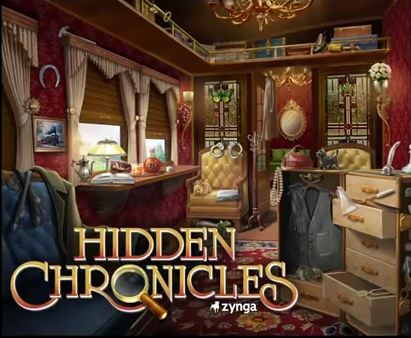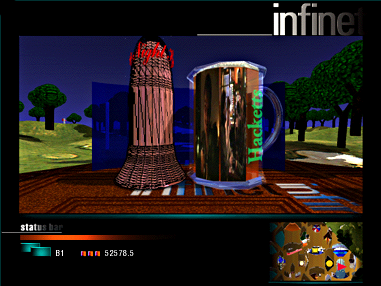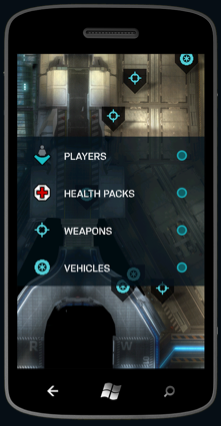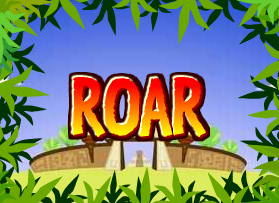A great initiative, many of these techniques are easy to achieve and have a big effect on making games playable by more people. http://gameaccessibilityguidelines.com/basic
Category Archives: Games
End game interactive narrative
I saw this posted to the Interactive Narrative Linkedin group. The project is a nice addition to a TV series. An online adventure that uses Facebook – you see one of your friends kidnapped then you help solve the crime. The detective and characters from the show address you directly. The puzzle solving is very simple with lots of hints and help built-in. The puzzles follow the familiar assemble photo’s, look at a computer desktop, click on objects in a room. But the drawing of images from you Facebook friends, although an old trick, is nicely done and has a touch of humour. Overall this is pitched perfectly as a quick enjoyable adjunct to the TV show. It makes me wish Facebook connect had been around when we made the ARG Jamie Kane and the online drama Signs of Life for the BBC.
[youtube=http://www.youtube.com/watch?v=uFaFcYFkFVc]
Side scrolling game in real life
I came across this while doing some game research. These guys find an amusing way to replicate side scrolling in real life with the use of high-tech gizmos and a giant model of the bullet from Mario Kart.
[youtube=http://www.youtube.com/watch?v=tcD7LMDNG0w]
Conversation not registration
My friend Eric M came to work with a great idea. Instead of registration to a website – where a punter is asked a load of questions in a form. You engage then in a conversation and ask for only the information you need at the point that seems relevant to the user. For example if it’s a game site you ask for a name to use so they can play a game. When the player wins you ask for an email address so you can send them their prize or so they can share their score. When they lose you ask for their email address to send them more tokens or chips so they can play again. Hence my condensation of this idea as a conversation instead of registration.
Valve take Hammer the Portal game engine into the classroom
[youtube=http://www.youtube.com/watch?v=QGQo0z3XikI&feature=player_embedded#!]
A great piece of work, I’m not sure if the developers or the kids enjoyed the experience more. Valve, the people behind some lovely video games; Half Life and Portal took the building tool behind Portal 2 into a classroom. Pointed some teams of 12 year olds at the basics of level design and watched them play. Inspiring stuff.
Another step towards a safer internet
The latest incarnation of the controls that governments and corporations are attempting to put in place is SOPA. This seems like another faltering step towards a Team America style policing of the World Wide Web. This takes me back to the mid nineties when I saw the first web browsers and the speed with which commercial interests scrabbled to work out how they could exploit it. I thought that eventually cyber space would reflect real space. In the way that towns have ‘safe’ centres packed with chain stores and advertising. The outer edges sometimes has the quirkier, left-field places. At the time I was studying interactive media and, rather than write an essay, decided to create an interactive story. It was called Infinet.
I created Infinet with four fellow students. We mashed-up brands – the giant pink tower was for Glaxo-Welcome with a Coke style ribbon logo and jingle. We had a confessional, a bank and a store selling Nike Air – flavoured air in breathable capsules. A visitors’ movement around this space was very limited to basic left and right panning and pre-rendered steps forward.
But there were cracks hacked into the veneer of Infinet. A visitor might stumble upon a bit of graffiti or lift a manhole cover. If they did they would find themselves in an endlessly spiraling vortex of unmediated spaghetti that represented the weird and wonderful, individual, quirky, sick and human web that we currently know. The way the visitor moved around this space was free-flowing. They could scroll, swoop and dive any which way they liked. I wanted to compare the narrow options of movement in Infinet which was like all the “interactive” options around at that time. It struck me as odd that a button that did something was referred as adding interactivity. For me all this did was react. The narrow corridor of pre-defined and pre-rendered “interaction” (Myst et al) also rang false. So the comparison between the way a visitor moved was part of my idea to begin to explore the notion of what interactive meant.
Some additionally playful elements we added was a Status bar that displayed your status using marketing (socio-economic) categorys such as B1 or D4. The project was successful and we won a place at the New Talent Pavilion at Milia ’97. I got to fly business class to Cannes and show Infinet to 1,500 of the good and the great of new media in the same hall that they present the film awards.
We built Infinet while studying for MA Design for Interactive Media (DIM) at Middlesex University. The project was assembled in Director 5, coded in Lingo with the models and fly-through in Strata 3D.
Mobile (cell phone) apps that augment a console game – Halo ATLAS
A nice idea, why not use your phone to augment your console game. The ATLAS, in future releases, promises to track your movements during the game and show you the locations of useful items such as transport, health packs, weapons, etc. I wonder how long it will be until someone makes a harness to mount you ATLAS equipped phone onto your arm so that you can easily check it without looking away from the game.
“Along with weapon, vehicle, and health pack locations, ATLAS will also show the location of your teammates in team games. You will get visual indicators when your teammates are engaged in combat and when they are killed, and even when they positioning themselves to strike.” read more
“Your me time for the day”
 I just watched the promo for Hidden (objects) Chronicles that is Zynga’s entry into the ‘find the objects in a densely drawn scene’ game. Miniclip have been doing these for a while and they are very popular with a mostly female audience.
I just watched the promo for Hidden (objects) Chronicles that is Zynga’s entry into the ‘find the objects in a densely drawn scene’ game. Miniclip have been doing these for a while and they are very popular with a mostly female audience.
But Zynga have pushed the boat out by adding social elements. Hmmmm let’s see now, oh yes you can challenge a friend, leave clues and annoy others with gifts. All pretty solid fare and the scenes do look very nice. So game looks fine but then in the promo video, it’s all about “your me time for the day” what poodle squirt! Anyway you can watch it for yourself.
Child’s play – children learning from playing games
I saw this “games based learning” initiative from up north. One of the contributors mentions how much ‘we’ learnt from playing hopscotch as children. I think this is missing the point about the both the IT, cognitive and creative skills that can be developed by well designed games.
Tokens with value
I was waiting for train on Earls Court station this morning. A man sitting on a bench sat holding, in both hands, a small slip of pink, slightly crumpled, paper. It was a print out that you get from a newsagent with your lottery numbers on. He stroked the edge of the paper looking intently at it. It seemed as if he was running through the numbers, possible important numbers to him (his daughter’s birthday, his first flat?). The fascination and concentration that held him reminded me of the power we can give to simple tokens. Quite ordinary looking things can be endowed with huge significance. We are surrounded by more hyper graphics in video advertising hoardings, mobile application, etc. It felt good to be reminded that this is not always necessary.


